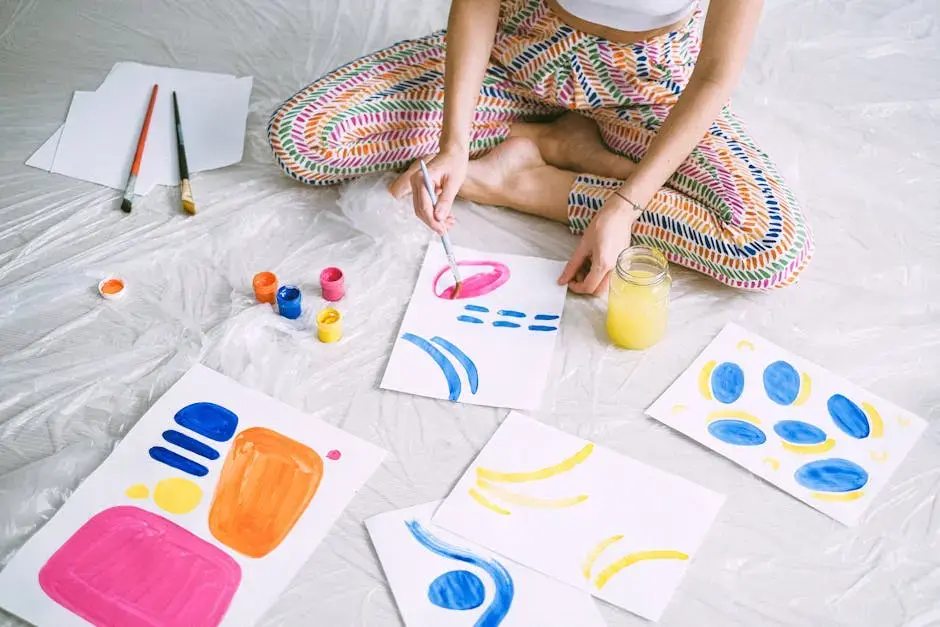Can an Art Therapist Help Improve Emotional Regulation?
- Karrie Stafford

- Oct 31, 2024
- 3 min read
Art therapy is a powerful tool that can assist individuals in managing their emotions. In this blog, we will explore how art therapists can support emotional regulation, helping you understand the process and benefits involved.

Understanding Emotional Regulation
Emotional regulation refers to the ability to manage and respond to emotional experiences in a healthy way. It is fundamental to our overall well-being and quality of life.
Many individuals struggle with emotional regulation due to various life circumstances, including trauma, stress, or mental health conditions. This can lead to overwhelming feelings that impact daily activities.
Effective emotional regulation involves understanding one's emotions, developing coping strategies, and responding to feelings constructively. Without these skills, emotions can spiral, leading to significant distress.
Art therapy provides unique opportunities for people to become more aware of their emotions. Engaging in creative activities allows individuals to express what they are feeling, often more easily than through verbal communication.
Role of an Art Therapist
The art therapist serves as a facilitator for emotional expression. They guide clients through the creative process while providing support and understanding.
A pivotal role of an art therapist is to establish a safe space for clients. This space fosters trust, enabling individuals to explore sensitive emotions without fear of judgment.
Art therapists are also trained to identify emotional difficulties. By observing clients’ artwork and their reactions, they can gain insights into areas that need deeper exploration, enhancing the therapeutic journey.
In addition to expressive skills, art therapists equip individuals with coping mechanisms to deal with distressing emotions. They teach clients how to use art as a tool for relaxation and mindfulness.
Techniques Used in Art Therapy
Art therapy encompasses a wide variety of techniques designed to engage different aspects of creativity. From painting to sculpting, each method serves as a doorway to self-discovery.
One popular technique is creating visual journals. This allows clients to visually record their feelings and thoughts over time, creating a tangible reflection of their emotional journeys.
Another effective method involves guided imagery during art creation. Clients are prompted to visualize a certain scene or emotion, helping them to bring buried feelings to the surface.
Group art therapy sessions also promote communal support. Participants share their experiences and artworks, fostering connections and understanding among group members.
Ultimately, the techniques used are adaptable. Art therapists tailor their approaches based on individual needs, ensuring that everyone finds a method that resonates with them.
Benefits of Art Therapy for Emotional Regulation
One of the most significant benefits of art therapy is its ability to enhance emotional awareness. By engaging in creative tasks, individuals often become more in tune with their feelings.
Through the creation of art, many individuals find a healthy outlet for emotions they might otherwise struggle to express. This can lead to a reduction in anxiety and depressive symptoms.
Moreover, art therapy encourages self-reflection. Many clients report gaining deeper insights into their thoughts and behaviors, empowering them to make positive changes in their lives.
Another notable benefit is the development of problem-solving skills. As clients work through artistic challenges, they learn how to approach difficulties in a constructive manner.
Lastly, art therapy fosters a sense of accomplishment and self-worth. Completing a piece of art can increase self-esteem and provide a sense of purpose, reinforcing the idea that individuals have control over their emotional well-being.
Finding the Right Art Therapist
Choosing an art therapist can feel overwhelming, but there are several factors to consider. It's essential to find someone who aligns with your needs and preferences.
Start by exploring the therapist's qualifications and experience. Certified art therapists often have extensive training in both art and psychology, which equips them to handle complex emotional issues.
Additionally, it's crucial to consider their therapeutic approach. Some therapists may focus on specific populations or techniques, so finding one that resonates with your goals is vital.
Don't forget the importance of chemistry. A good rapport between you and your art therapist can enhance the effectiveness of your sessions. Trust your instincts when meeting potential therapists.
Finally, consider logistical factors such as location and cost. Many art therapists offer sliding scale fees or online sessions, broadening access to their services.
In Summary
Art therapists play a vital role in helping individuals improve their emotional regulation through creative expression. By utilizing various art techniques, they create a safe space for exploring emotions, leading to healthier coping strategies and improved mental well-being.




Comments